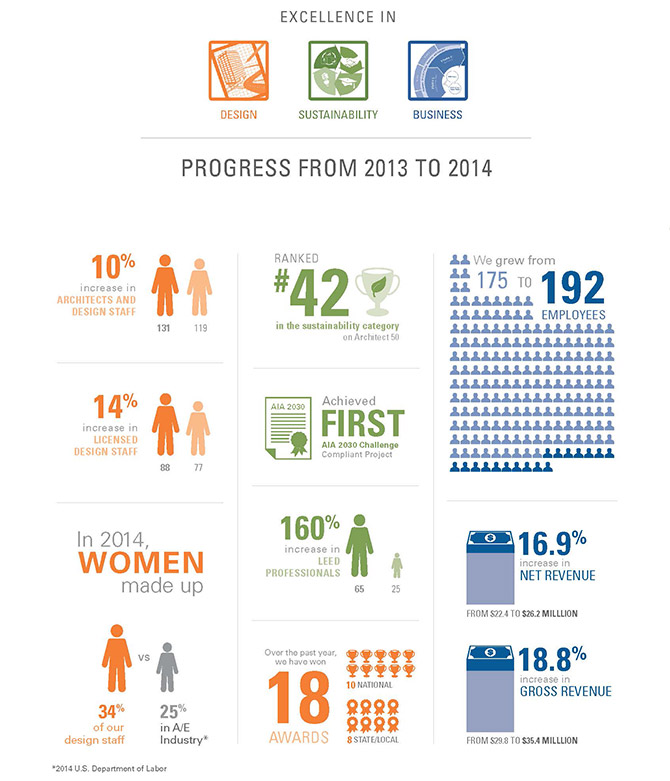In any business, it's vital that consistent record-keeping is used to benchmark progress. Corporate sustainability reporting is no different. Organizations at home and abroad recognize that they are responsible for the ways their operations impact the natural environment. Likewise, consumers are also more concerned with their environmental footprint, for example how their purchasing decisions contribute to carbon emissions or other environmental impacts. Today, more consumers than before select products and services from companies who make corporate social responsibility a priority. Businesses reaction to market transformation recognizes an increased importance of demonstrating organizational commitment to sustainable development while benchmarking their performance over time. Corporate sustainability reporting enables companies to consider their impacts on a wide range of environmental issues, enabling them to be more transparent about the risks and opportunities they face.
Here at Dewberry, we believe that the best way to serve our communities and clients is by demonstrating continued improvement of our sustainability commitment as a firm. We are dedicated to tracking and benchmarking our progress both internally as well as assess our performance against others.
One way we measure our progress is through the “Architect 50,” a national ranking of architecture firms published by Architect magazine annually. Unlike most rankings, which are based solely on revenue, the Architect 50 ranks the best performing firms in three categories: Excellence in Business, Excellence in Sustainability, and Excellence in Design.
Recently, this garnered us recognition by the 2015 Architect 50 in which we were ranked as a top 50 sustainability firm for the 2014 reporting period. Here is our progress in all categories as of 2014:

In our 58-year-history, we have innovated and strived for improvement both as a firm and for our clients. We continue to uphold this legacy through our firm’s goals and by setting best practices, including our sustainability criteria. In this effort, 2014 was the best year ever in our 58-years of practice in terms of our sustainability metrics.
Putting our Efforts to Work
Our 2030 compliant project that we are currently planning will be the Union Rosa Parks Elementary School in Tulsa, Oklahoma, where we are expanding and renovating the school by 10,900 square feet. The project, which will be completed in August 2016, includes building envelop, MEP systems, lighting, and specification follow-through. Our team reviewed specifics of information used from the Energy Model Input Confirmation. They also reviewed and confirmed the Energy Model Output, how the design was expected to perform, including model assumptions. Based on our team’s input, the project model is fully compliant with the 2030 Challenge as it achieved more than a 71.2-percent reduction from standard, which exceeds the required 70-percent reduction.
The 2030 Challenge commitment is a great way to reach stretch goals and enrich communities. Our architecture team, which specializes in the design of important civic, educational, and public health projects are a large part of reason we are able to benefit these communities thorough our work that promotes environmental quality, economic vitality, and social benefit. I look forward to continuing to foster our commitment; balancing long-term environmental, economic, and social goals by achieving improved efficiencies and performance for our projects, clients, and everyday activities; as we continue to look at how we can improve our sustainability as a firm and build upon our expertise for years to come.